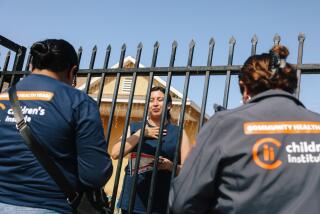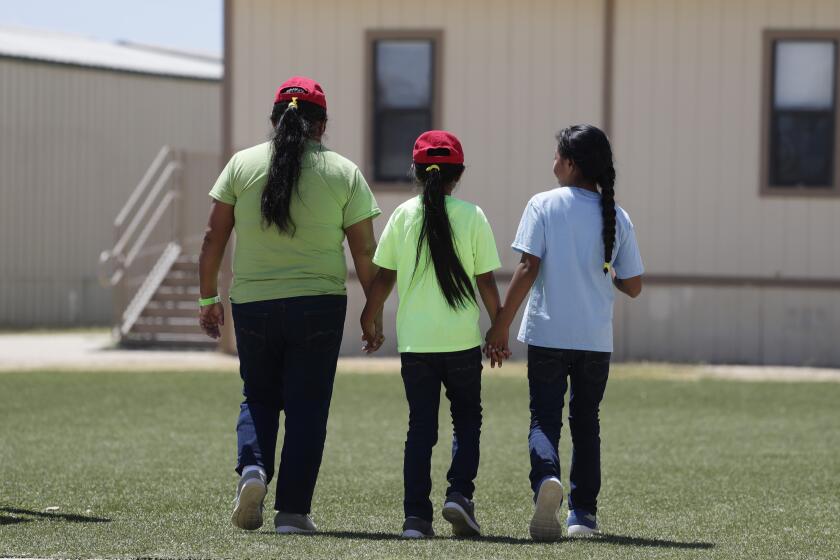Census Workers Count On Publicity to Boost Response
- Share via
The census is coming--and by all accounts, it will be hard to miss.
On billboards and bus benches, newspaper ads and television commercials, the federal government will promote its 2000 campaign to count as many people as possible.
Appearing in fairs, community meetings, church services, schools--anywhere people gather in large groups--census workers will urge Orange County residents to participate.
The census is about more than counting heads, said Arnold Landau, the Fullerton census office manager. The federal and state governments use population counts to determine funding for programs. The data also benefit school districts, businesses and nonprofit organizations that rely on demographic information to apply for grants.
By spending $166 million on advertising and expanding its staff, the U.S. Census Bureau hopes to repair the damage that was done in 1990 when minority populations and children were undercounted, said census media specialist Jeanine Kabrich. In Orange County, an estimated 4.9% of ethnic Hispanics and 1.9% of Asian Pacific Islanders were missed.
“People fear that information obtained in the census questionnaire might be shared with other agencies, like the INS, the IRS, code enforcement, law enforcement or the Bureau of Indian Affairs,” said Armando Ramirez, a Santa Ana-based census community partnership specialist. “A lot of people do not know this information is confidential and there is no reason to fear the census questionnaire. If they have faith in us, this will help their entire communities.”
So confidential is the census, in fact, that even President Clinton cannot peek at the surveys. The questionnaires are locked at the National Archives in Washington, D.C. for 72 years. Census workers who violate the confidentiality of the questionnaires face federal prosecution.
*
To spread the word in Orange County that it is safe and worthwhile to participate in the process, nearly 4,000 census workers will work out of offices in Santa Ana, Fullerton, Irvine and Huntington Beach. Some staffers will contact local governments, businesses, faith-based organizations and nonprofit groups to form community-based “census count committees.”
In Santa Ana, 40 community leaders, business owners and activists are on such a committee to help the census bureau promote the campaign, said Manuel Gomez, assistant to the Santa Ana city manager. In 1990, Santa Ana was undercounted by at least 30,000 residents, Gomez said.
“We’re very concerned about how the census bureau’s advertising campaign, which is a national one, is going to work here in Santa Ana,” Gomez said. “We will act as an advisory group on finding ways to best reach the residents here. People need to realize what their participation will mean. The surveys are used by a lot of sources, not just the cities. It’s really more than just counting people.”
In California, the undercount of 800,000 people cost the state millions of dollars for children’s health care, education programs, road construction, parks and libraries.
For example, it is estimated that seven schools could be filled in Santa Ana with the children who were missed 10 years ago, Landau said.
“People tend to treat their babies as possessions and not the people that they are,” Landau said. “Your child is a person who will need to go to school. We have to count the children now. Remember, that child is going to want a car when he turns 16, and he better have a road to drive on.”
*
Committees like the one Gomez leads also will assist the census bureau in picking sites for assistance centers where people can seek help in filling out the surveys.
Although only the Santa Ana office is open in Orange County, census officials expect all four to be functioning by October. Staffs of 10 will manage the offices, with the rest of the employees working in the field.
Already, more than 600 workers have canvassed every block in Orange County to verify addresses where people live, said Carlos Olivas, the Santa Ana census office manager. Workers are now comparing their lists with city records.
The 2000 census questionnaires will be mailed to Orange County households in March. Surveys will be distributed to individuals in group homes, halfway houses, monasteries, convents, youth hostels, college dormitories and jails. Census takers also will interview migrant and seasonal farm workers as well as people living on military installations and ships in the United States and overseas.
After the bureau receives the surveys, census takers will go door-to-door in search of those who failed to respond.
“That’s when the real work begins,” Gomez said.
More to Read
Sign up for Essential California
The most important California stories and recommendations in your inbox every morning.
You may occasionally receive promotional content from the Los Angeles Times.










